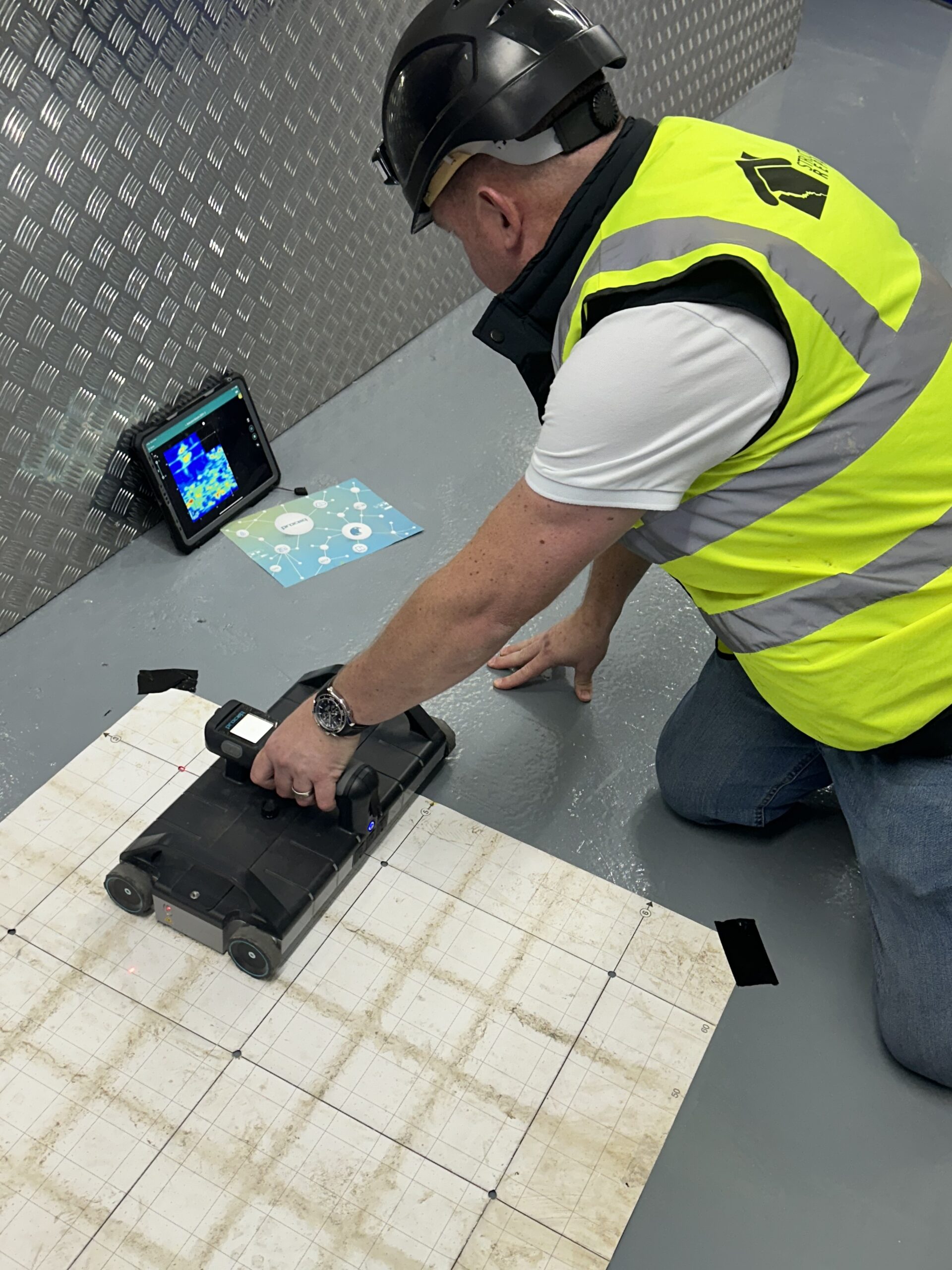Selecting the Right Concrete Scanning Devices
Selecting the Right Concrete Scanning Devices
Blog Article
Past the Surface Area: Leveraging Advanced Concrete Scanning Techniques for Unmatched Precision and Insight
In the world of building and framework maintenance, the pursuit for precision and thoroughness is incessant. Advanced concrete scanning techniques have actually emerged as important devices in this search, offering a glimpse underneath the surface to reveal a globe of crucial understandings. By taking advantage of sophisticated innovations, experts can reveal anomalies, examine the problem of concrete frameworks, and make informed decisions that shape the program of tasks. The effects of these techniques prolong much beyond mere surface-level examinations, assuring a deepness of precision and understanding that is exceptional.
Importance of Advanced Concrete Scanning
The significance of utilizing sophisticated concrete scanning strategies hinges on the unequaled accuracy they provide for spotting sub-surface anomalies and guaranteeing architectural stability. By using advanced innovations such as ground-penetrating radar (GPR), electro-magnetic induction, and progressed finder imaging, building and construction professionals can dive below the surface of concrete frameworks with a degree of precision that much goes beyond typical examination methods. Concrete Scanning. These methods enable the recognition of surprise threats like rebar rust, voids, conduits, or post-tension cables that might compromise the stability and security of a framework gradually
Furthermore, advanced concrete scanning gives invaluable understandings into the general condition of a concrete element without the demand for intrusive procedures, lessening the risk of causing damages throughout the assessment procedure. The capacity to determine the specific area and depth of prospective issues permits targeted repair work and upkeep, eventually lengthening the life-span of the framework and maximizing its efficiency. Basically, the importance of innovative concrete scanning can not be overemphasized in the realm of building and infrastructure maintenance, where accuracy and dependability are vital.
Kinds Of Cutting-Edge Technologies

Anomalies and Flaw Discovery

In enhancement to GPR, concrete scanning methods like thermography and impact-echo screening are additionally efficient in finding anomalies and her comment is here flaws. Thermography makes use of infrared modern technology to identify variants in surface area temperature, showing potential locations of problem such as delamination or moisture ingress. On the other hand, impact-echo testing entails examining acoustic reactions to discover spaces, splits, and various other problems within the concrete. By leveraging these sophisticated methods, specialists can proactively deal with architectural concerns, making sure the longevity and security of concrete frameworks.
Assessing Concrete Problem
Exactly how can designers properly assess the condition of concrete frameworks to guarantee their long life and safety? Assessing the concrete problem is a crucial element of maintaining infrastructure stability. Various innovative concrete scanning techniques are used for this purpose. Ground-penetrating radar (GPR) is generally utilized to analyze the inner framework of concrete, discovering voids, cracks, and other anomalies that may endanger its strength. Furthermore, impact-echo screening can offer understandings into the thickness and integrity of concrete components. Ultrasonic pulse speed testing is an additional important method for evaluating concrete high quality by gauging the rate of audio waves with the material.
In addition, visual evaluation continues to be an essential part of concrete problem evaluation. Designers aesthetically take a look at the surface for signs of degeneration, such as spalling, cracking, or discoloration. Combining non-destructive testing techniques with visual evaluations enables a thorough analysis of concrete condition, enabling engineers to recognize prospective concerns early on and apply prompt maintenance or fixings. By leveraging these innovative methods, engineers can guarantee the long-term sturdiness and security of concrete structures.
Enhancing Decision-Making Processes
In the world of facilities monitoring, maximizing decision-making processes is critical for guaranteeing the efficient upkeep and durability of concrete frameworks. Improved decision-making processes in concrete administration involve making use of sophisticated scanning strategies to collect detailed information on the condition of frameworks. By leveraging innovations such as ground-penetrating radar and 3D imaging, stakeholders can make educated choices pertaining to substitute, reinforcement, or repair service techniques.
These progressed scanning techniques supply indispensable understandings into the interior make-up of concrete, determining possible click to read more issues such as gaps, splits, or rust that might not be visible on the surface. This level of in-depth information permits aggressive upkeep planning, decreasing the risk of structural failures and raising the overall lifespan of concrete structures.
Additionally, by including electronic documents and evaluation devices right into the decision-making procedure, stakeholders can track the advancement of concrete problems with time, making it possible for anticipating maintenance strategies and maximizing resource appropriation. Eventually, the combination of advanced concrete scanning methods enhances decision-making procedures by providing unparalleled precision, understanding, and effectiveness in facilities administration.
Conclusion
To conclude, advanced concrete scanning methods provide unparalleled precision and insight in identifying abnormalities, defects, and analyzing the condition of concrete frameworks. By leveraging cutting-edge technologies, decision-making procedures can be improved, leading to even more effective and educated services for maintaining and fixing concrete facilities. These techniques play an important role in ensuring the safety and security and durability of concrete frameworks, making them an indispensable device in the field of construction and design.
Additionally, advanced concrete scanning supplies important understandings right into the overall problem of a concrete aspect without the requirement for intrusive steps, lessening the danger of see this here creating damage throughout the assessment procedure - Concrete Scanning. Another cutting-edge innovation is 3D X-ray scanning, which provides in-depth photos of the interior framework of concrete, using valuable information without the demand for harmful testing. In Addition, Concrete Cover Meters are used to determine the density of concrete cover over reinforcement bars precisely. Boosted decision-making procedures in concrete monitoring include making use of innovative scanning strategies to gather comprehensive information on the condition of structures.In verdict, progressed concrete scanning techniques use unequaled precision and insight in discovering abnormalities, defects, and evaluating the condition of concrete structures
Report this page